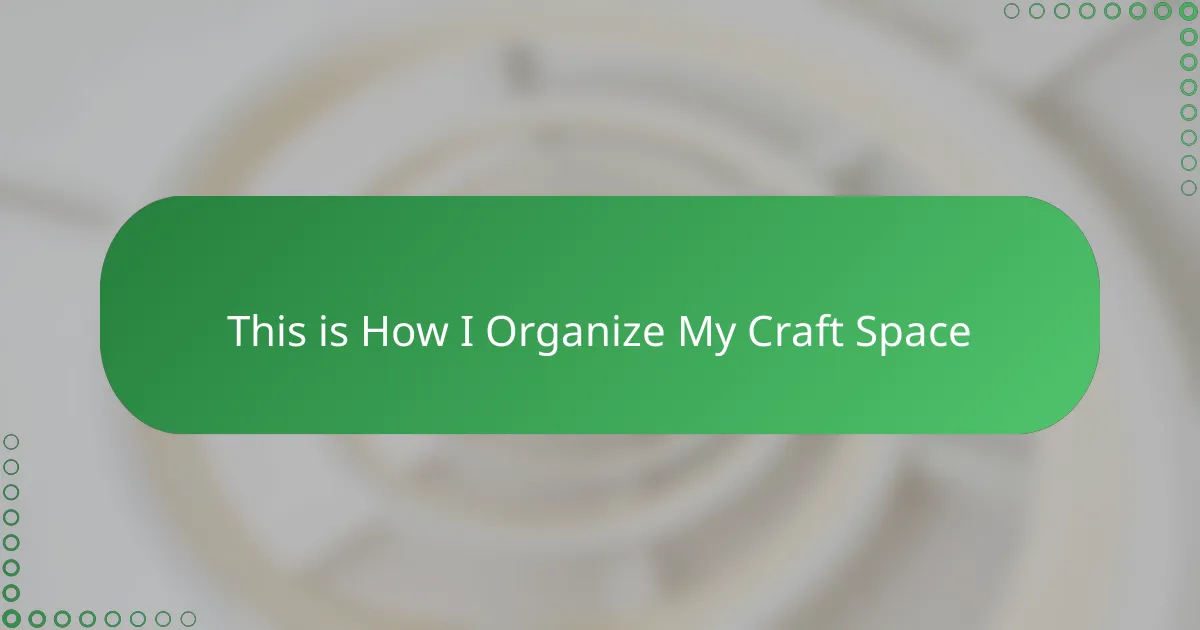Key takeaways
- Handmade paper crafts offer a tactile and unique experience that emphasizes the connection between the creator and the materials.
- A well-organized craft space with clear storage solutions, lighting, and distinct work zones enhances creativity and efficiency.
- Categorizing supplies and maintaining daily organization contribute to a smoother workflow and inspire new ideas.
- Flexibility in organization and the use of labels can significantly improve the crafting experience, allowing for adaptability and ease of access.
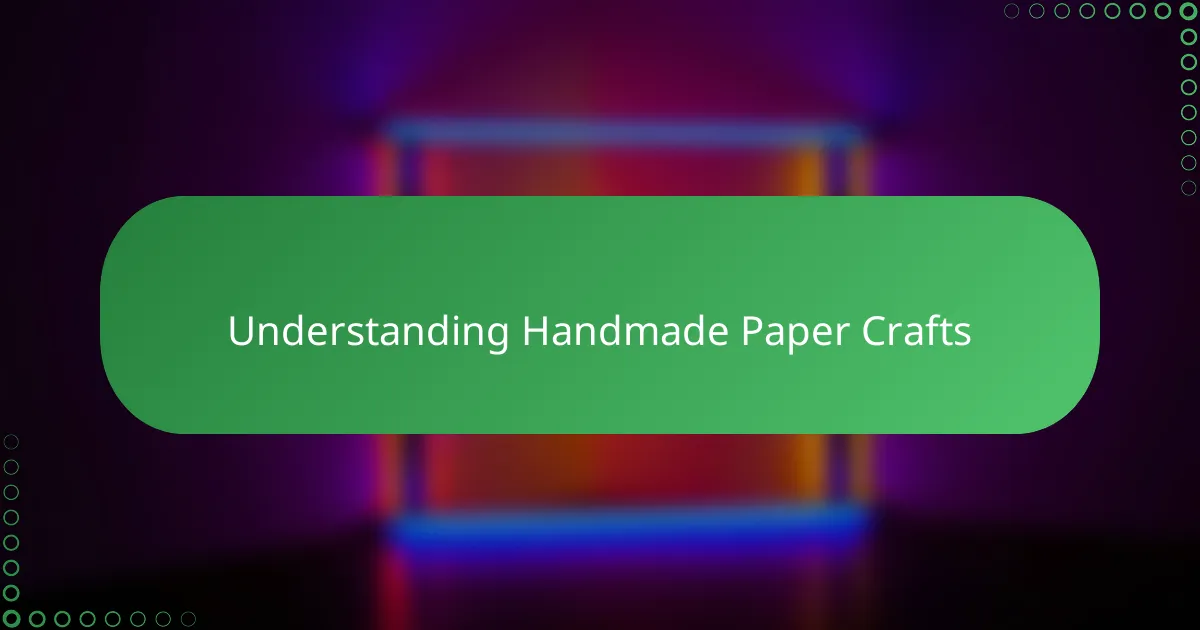
Understanding Handmade Paper Crafts
Handmade paper crafts have a unique charm that machine-made items just can’t replicate. When I first started, I was amazed by how simple materials like pulp, water, and natural fibers could transform into such delicate and expressive creations. Have you ever paused to think about the care and patience that goes into each sheet?
For me, understanding this craft meant appreciating the texture, weight, and absorbency that only handmade paper offers. It’s not just about crafting; it’s about connecting with the process—feeling the paper’s roughness under your fingers or the subtle imperfections that make each piece one-of-a-kind. That tactile experience constantly reminds me why I love working with handmade paper.
What’s truly fascinating is how versatile handmade paper can be—from personalized cards to textured backgrounds that add depth and character to my projects. Each time I sit down to create, I’m reminded that this craft brings together art, tradition, and a bit of magic. It makes organizing my space all the more meaningful because every tool and material supports this delicate process.

Essentials for Craft Space Setup
When I set up my craft space, I quickly realized that having sturdy, flat surfaces was non-negotiable. Without a reliable table or desk, managing wet handmade paper pulp would be a constant struggle. Have you ever tried spreading pulp on a wobbly table? Trust me, it’s frustrating and wastes precious materials.
Storage solutions are another essential I can’t live without. Clear containers for fibers, molds, and drying screens help me see exactly what I have at a glance, saving time and mental energy. I love how organized shelves turn a chaotic pile of supplies into an inspiring palette ready for creativity.
Lastly, good lighting transforms the entire atmosphere. Natural daylight is ideal, but if that’s limited, a bright, adjustable lamp works wonders. When I can see every texture and detail clearly, it deepens my connection to the paper and makes the crafting process even more enjoyable. Wouldn’t you agree that seeing your work clearly feels like the first step to making it truly shine?
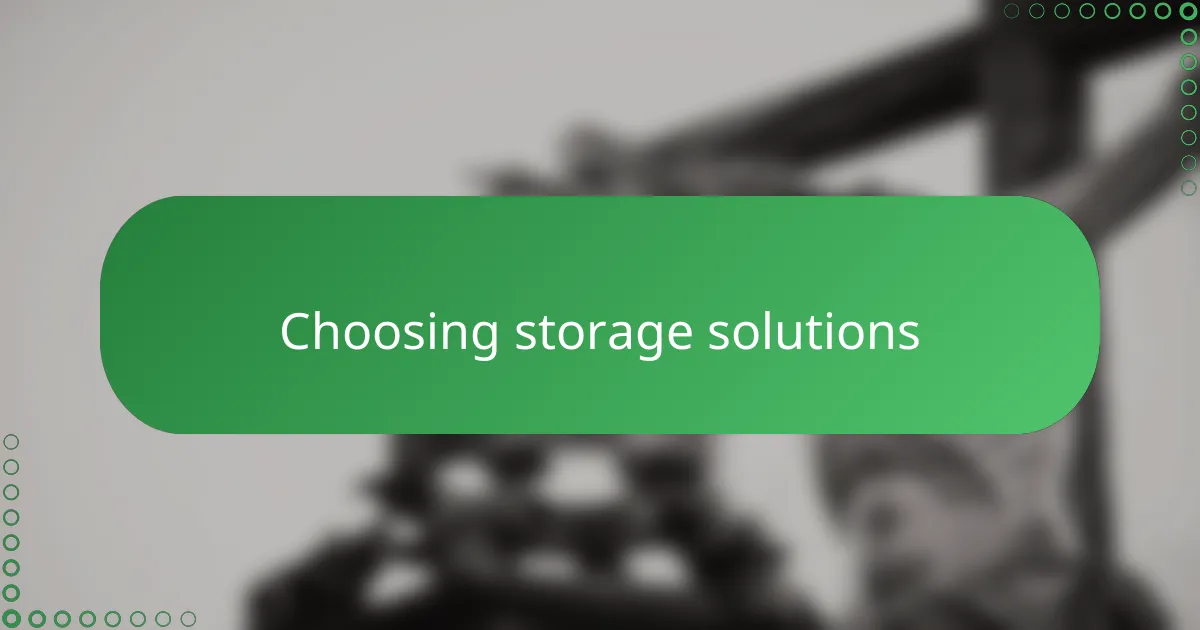
Choosing Storage Solutions
Choosing the right storage solutions felt like the secret ingredient that brought order to my craft chaos. I remember once trying to stack various paper molds without a plan—it ended in a toppled mess and a lot of lost time. Since then, I’ve leaned towards stackable, transparent bins that let me spot my tools and materials instantly without rifling through piles.
I also find that compartmentalized drawers work wonders for sorting smaller items like pulp fibers and embellishments. Do you ever get frustrated hunting for that one tiny tool? Having everything in designated spots not only saves me effort but also keeps my creative flow uninterrupted. It’s amazing how much more enjoyable crafting becomes when clutter isn’t stealing your focus.
Sometimes, I opt for open shelving to showcase some of my favorite handmade papers and drying racks. This choice transforms storage into a sort of gallery, reminding me why I fell in love with this craft in the first place. Isn’t it inspiring when your storage doubles as a visual muse, keeping your passion alive every day?

Categorizing Craft Supplies
Sorting my craft supplies into clear categories changed everything for me. For instance, I separate fibers, dyes, and embellishments because each has its own unique way of being stored and accessed. Have you ever found yourself digging through a mixed pile of materials, only to waste time and lose your creative momentum? I certainly have, and that frustration pushed me to get serious about categorizing.
I like to think of each category as its own mini workspace within my craft area. Keeping molds and tools together means when I’m ready to start a project, I’m not hunting for bits and pieces all over the place. Plus, grouping similar items helps me notice what I’m running low on, so restocking becomes a breeze rather than a scramble.
Interestingly, this method also feeds my inspiration. By clearly separating vibrant pigments from delicate papers, I can easily pull together contrasting textures and colors. It’s almost like having a curated palette right at my fingertips, which turns organizing from a chore into a creative ritual. Don’t you find that a tidy space often sparks fresh ideas? I sure do.

Creating Work Zones
Creating distinct work zones transformed how I approach my handmade paper projects. Instead of scrambling around, I have a dedicated wet area for pulp preparation and couching, separate from my drying and embellishing zones. This separation keeps each step clean and organized, making the whole process feel smoother and more intentional.
I remember the chaos before setting up zones—pulp splattered where it shouldn’t, tools mixed with drying papers, and a constant battle with clutter. Once I assigned spaces for each task, I noticed my workflow improved dramatically. Have you tried keeping all your messy, wet processes confined to one spot? It really cuts down on frustration and cleanup time.
Another benefit I’ve found is mental clarity. When I sit down in my designated molding zone, I know exactly what supplies are within arm’s reach, reducing distractions. It’s almost like each zone invites a different kind of focus—whether it’s mixing fibers, shaping sheets, or adding delicate touches. Do you feel that your environment affects your creative mindset? For me, these clear boundaries spark both efficiency and inspiration.
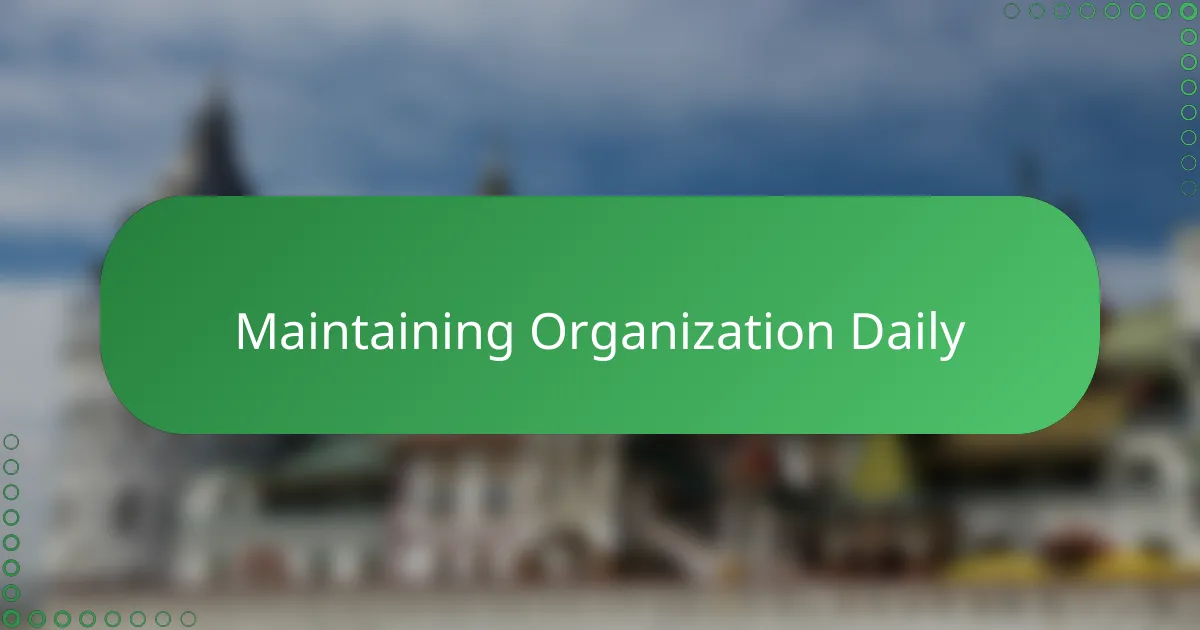
Maintaining Organization Daily
Maintaining organization daily can sometimes feel like a small challenge, especially when enthusiasm takes over and projects pile up. I’ve noticed that spending just five minutes at the end of each session—putting tools back in their spots and wiping down surfaces—makes a huge difference. Don’t you find that a quick tidy-up helps keep your space inviting for the next creative burst?
Sometimes, I catch myself tempted to leave piles of fibers or wet pulp containers out, promising to deal with them “later.” But experience has taught me that delaying this simple step only leads to cluttered chaos and wasted time searching. I’ve come to appreciate that a clean, orderly space doesn’t just look good—it nurtures my patience and respect for the craft itself.
What really motivates me to keep up daily organization is how it clears mental space. When everything has its place, I arrive at my table feeling calm and ready to create, not overwhelmed or distracted. Isn’t that exactly the state you want to be in to produce your best work? For me, maintaining daily order is as much about preparing my mindset as it is about tidying my tools.
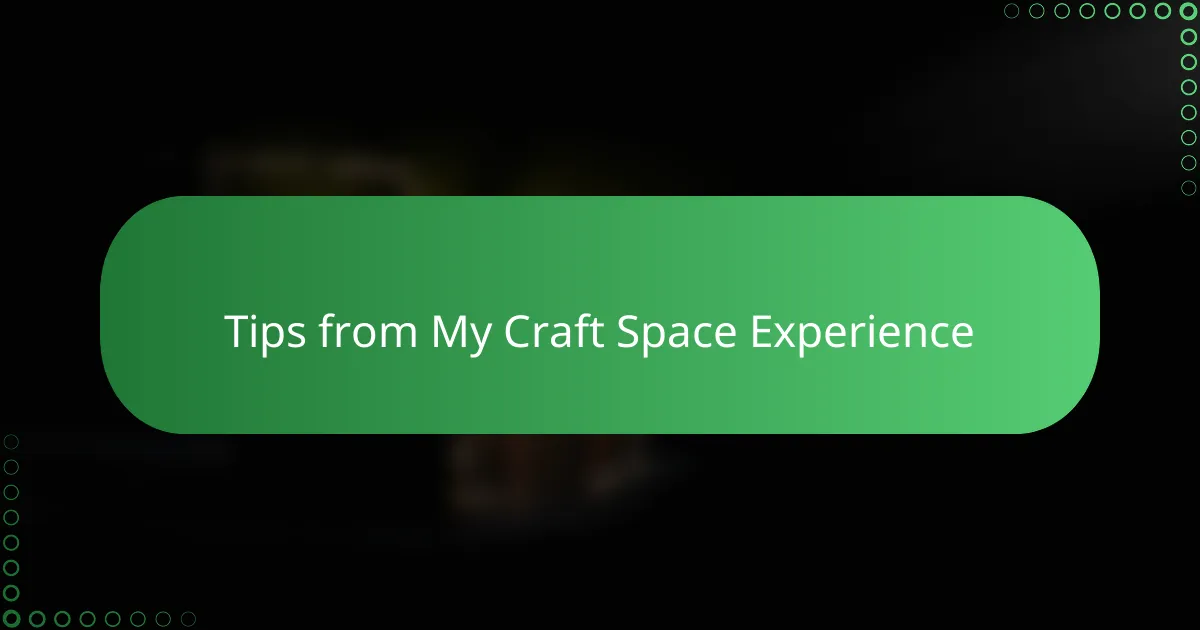
Tips from My Craft Space Experience
One tip I’ve learned the hard way is to always keep frequently used tools within arm’s reach. Early on, I kept my brushes and pulp fibers scattered around, and the constant up-and-down trips really broke my flow. Have you ever felt your creativity stall because you had to hunt for something simple? Streamlining your workspace this way keeps your focus where it belongs—on your craft.
Another insight I’ve gained is to embrace flexibility in your organization system. When I introduced adjustable shelves and movable bins, it felt like my space could finally grow with my evolving projects. Do you find your craft needs change over time too? Allowing room for adaptation prevents frustration and keeps inspiration alive.
Lastly, I can’t stress enough the value of labeling. At first, I thought labels were unnecessary, but misplacing specialty papers or unique dyes taught me otherwise. How often have you opened a container wondering what’s inside? Clear labels save time and ease mental clutter, making every crafting session smoother and more joyful.
